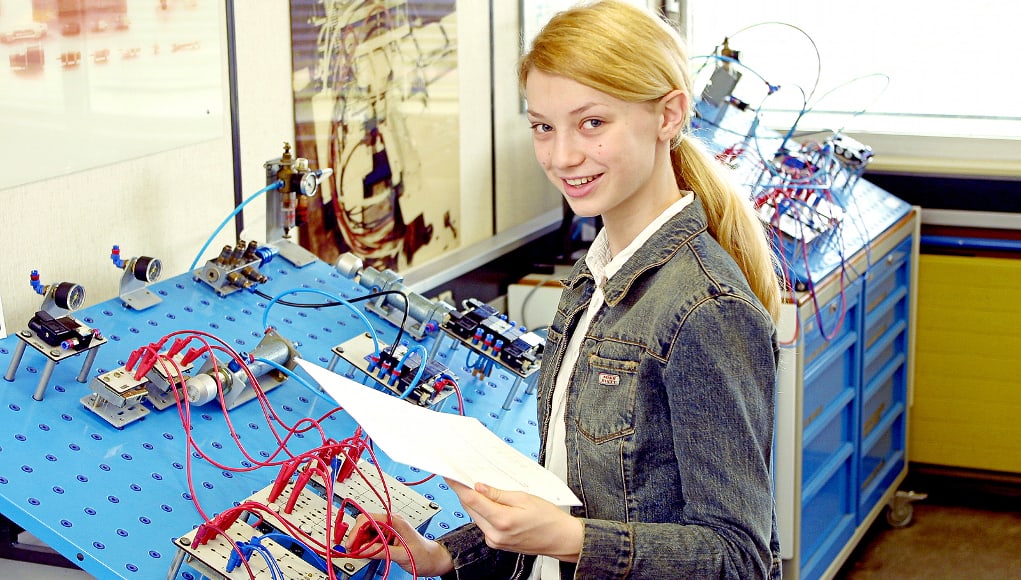The Future of Jobs Training: 2 Promising Career Prep Pathways

By Robyn Bagley
What will the career preparation of the future look like? This is a topic being heavily influenced by a variety of factors. Some of the more prominent factors include the current state of K-12 and post-secondary education, state budgets, the emergence of new technologies and the needs of a changing workforce.
There will likely always be a place for the traditional route of higher education – receiving a Bachelors, Masters or one of various higher degrees will continue to be valued. However, the demands of cost and time to the student are being reconsidered as employers are changing what they ultimately value. In addition, it is widely understood that this form of education does not and cannot serve everyone. We must embrace alternative pathways to education that provide opportunities for students and adults alike to become effectively trained for gainful employment as well as advance their current career pathway. Two such avenues receiving well-deserved attention are Career and Technical Education and Credentialing. The former is experiencing a rightful resurgence while the latter is an emerging innovation springing from the need for a trained workforce possessing very specific skills.
Respect is being returned to Career and Technical Education. We’re not talking wood shop here, folks. We’re talking highly sophisticated careers utilizing technology. These are modern jobs. Governors, legislatures and business and community leaders are recognizing the value that CTE jobs bring to the economy. Organizations such as Bloomberg Philanthropies, JP Morgan Chase and Siemens Foundation are jumping in with funding to incentivize initiatives. They are looking specifically for programs that will unite stakeholders to ensure that students have access to the skills and knowledge they need for financial and academic success, and that businesses have access to highly-trained talent. Focused programs such as CareerWise Colorado and YouthForce NOLA are popping up around the country and benefiting from these targeted philanthropic investments. Expeditionary learning that includes apprenticeships and internships provides superior training that is mutually beneficial to both student and employer and subsequently the economy.
Career and Technical Education became a critical component of job creation for the Triangle in Mississippi. This poor region brought in economic developer Joe Max Higgins to help them revitalize their community and bring back high-paying jobs. He brought them back in a big way through advanced manufacturing, which demands more brainpower than brawn. His strategy was more comprehensive than simply luring companies with the usual incentives – it required providing confidence in the community’s commitment to prepare a skilled workforce through customized career and technical education training. The promise of a trained workforce was integral to Higgins business plan – and it worked.
I have a personal affection for advancing Career and Technical Education, having founded and led a Blended Learning charter school (Career Path High). This Early College model was designed around a mission that every student will earn a career and technical certification from our college partner, DATC.edu, by the time they graduate high school, sending them out the door job ready. Our respective communities are full of resources that are underutilized. In developing our charter we recognized this, and determined that we would take advantage of those resources for the benefit of helping students achieve early success. Rethinking our approach to education beyond the traditional model is key to empowering learners over their education and career pathways. Secondary education could do a far superior job at utilizing the high school years. A great place to begin is by asking how our communities can capitalize on their existing resources as well as foster greater public/private partnerships.
Credentialing is another exciting new education frontier. We are certainly all aware of MOOCS. Providers of online education delivering single courses, certificates and nano degrees is an emerging and growing market. While attending ASU+GSV Summit 2017, I was fascinated to learn how employers and companies are jumping into this education space as well. It has created a rapidly growing niche for providers catering to corporate training needs, while some companies are creating their own content and courses. One keynote speaker, Andre Dua, particularly caught my attention and left an indelible impression with his innovative message, The “New” Corporate Learning: Transforming Talent to Create Value. He outlined eight specific propositions for how corporations will transform the way employees learn and receive training. His presentation left me fascinated with the prospect that companies are taking skills development and training into their own hands in a way we’ve not seen before. He went so far as to say that companies will become the new “Credentialers”. Think about that for a moment!
Technology has paved the way for a very personalized approach to learning. It can be entirely customized. You can meet the learner where they are and ensure a Competency-based approach to training them with the necessary skills the employer requires them to possess. This creates a perfect environment for Credentialing. It just makes sense. This revolution is sure to have an impact on how and where employees receive their training. I believe it will ultimately impact the way we view our overall approach to education, including traditional secondary and post-secondary pathways. It will certainly lead to broadening the options for how and where employees, both future and existing, receive knowledge, skills and workforce training. I can’t wait to see where Credentialing takes us!
Credentialing and Career and Technical Education are two very exciting career preparation pathways. Both provide focused, customized approaches for preparing individuals with employable skills that lead to not only a livable wage but also increased opportunities for advancing their career. Paradigm shifts can occur where we least expect them but most often occur when the current product is unable to meet the demands of the customer–in this case, students and their potential employers. The future certainly holds promise for improved and increased pathways for how students are educated and trained, as well as for how the demands for a skilled workforce are met.
For more on CTE and Credentials, see:
- Rethinking High School Graduation Requirements: Project & Microcredentials
- How to Create Experiences that Scale Environments and Change Lives
- Developing Self-Directed Learners
Robyn Bagley is President at Rethink Education Consulting. Follow her on Twitter at @gallagherrobyn.
Stay in-the-know with all things EdTech and innovations in learning by signing up to receive the weekly Smart Update.







0 Comments
Leave a Comment
Your email address will not be published. All fields are required.